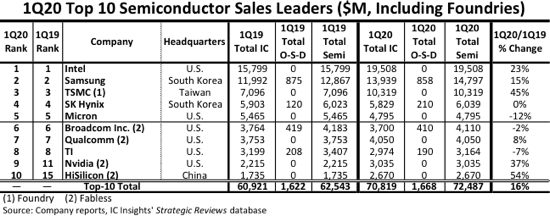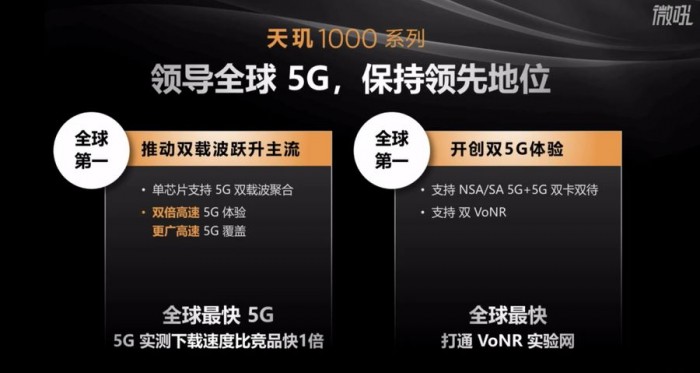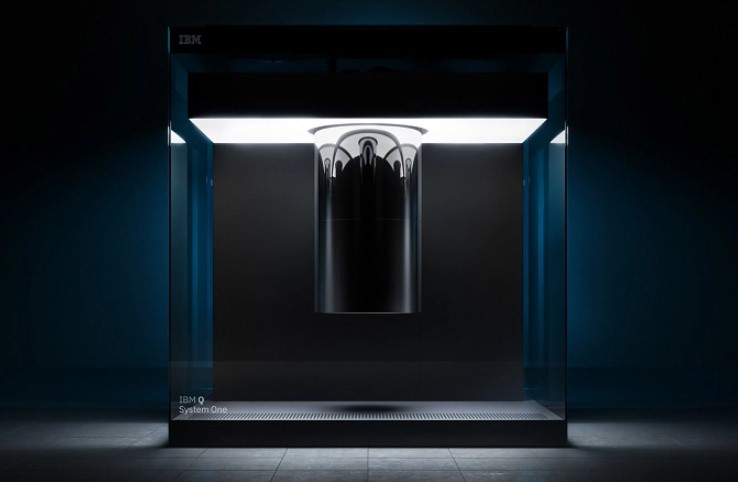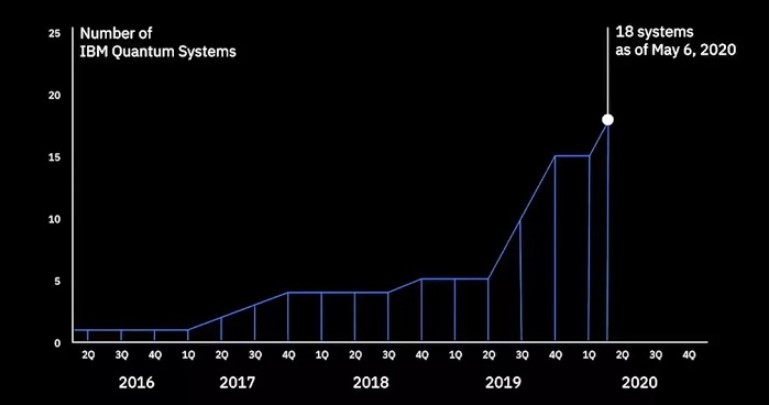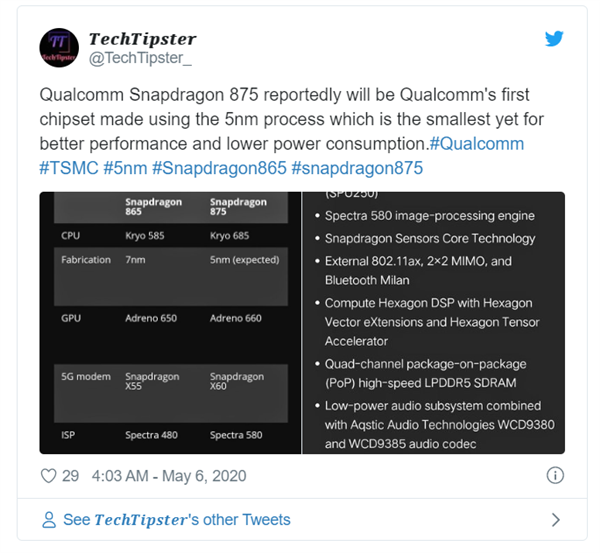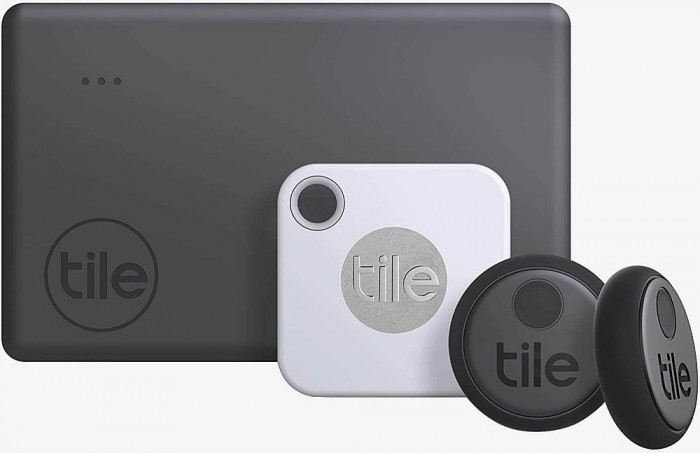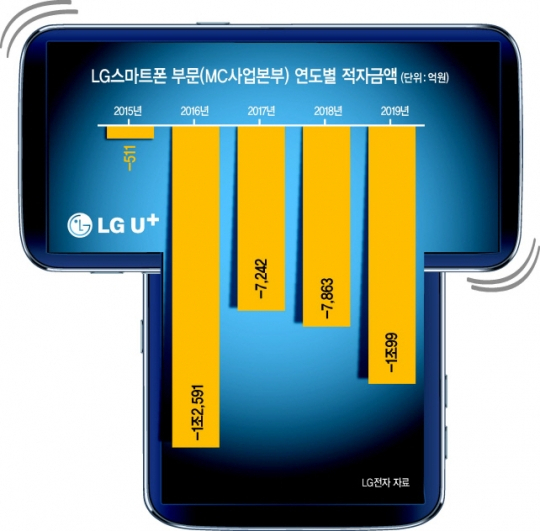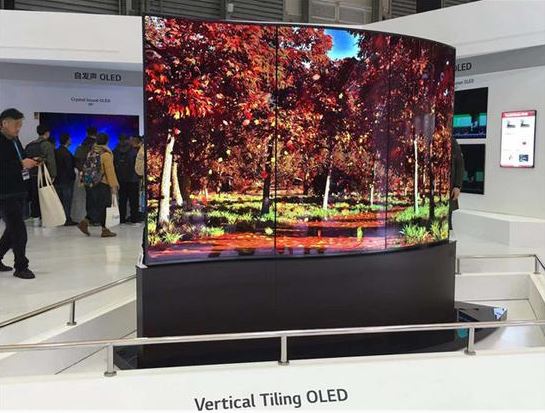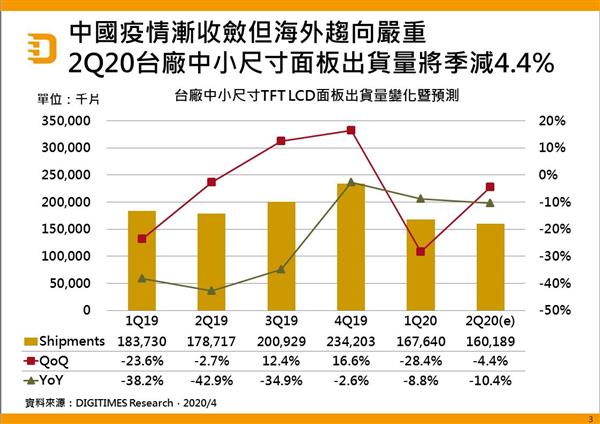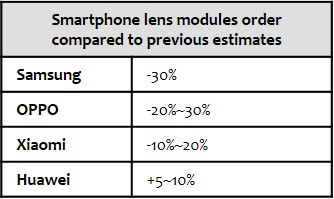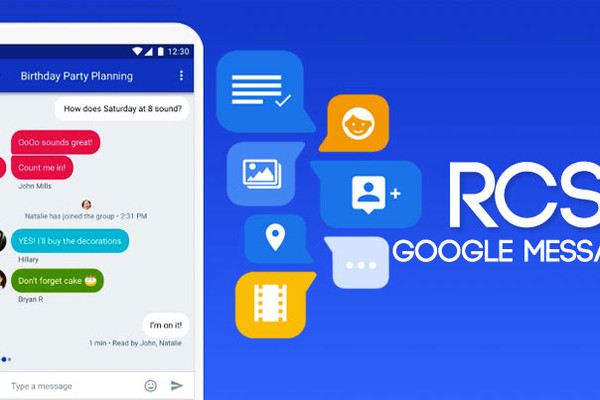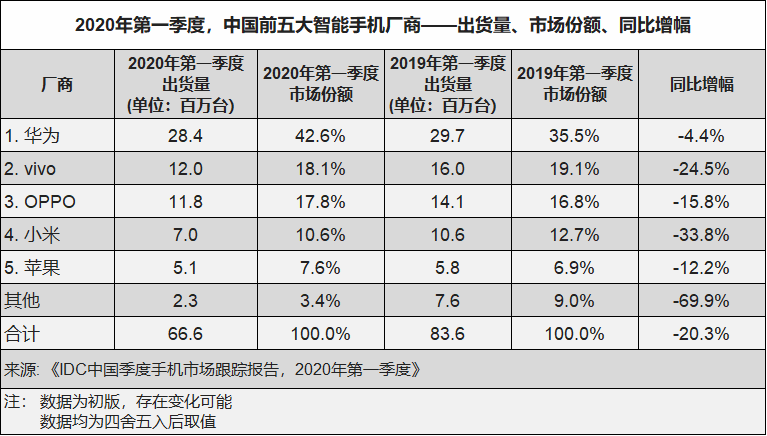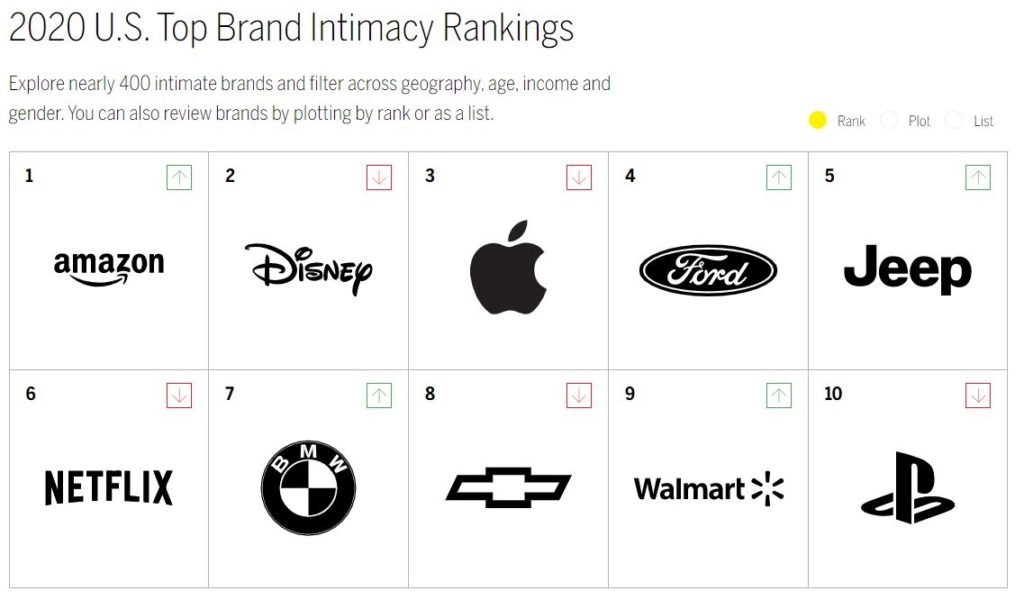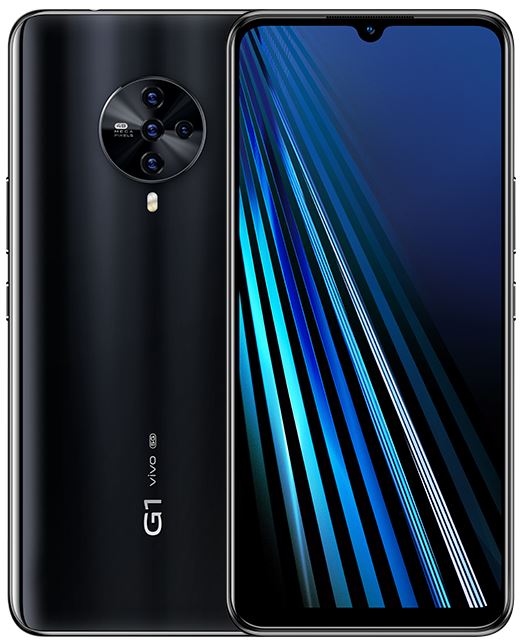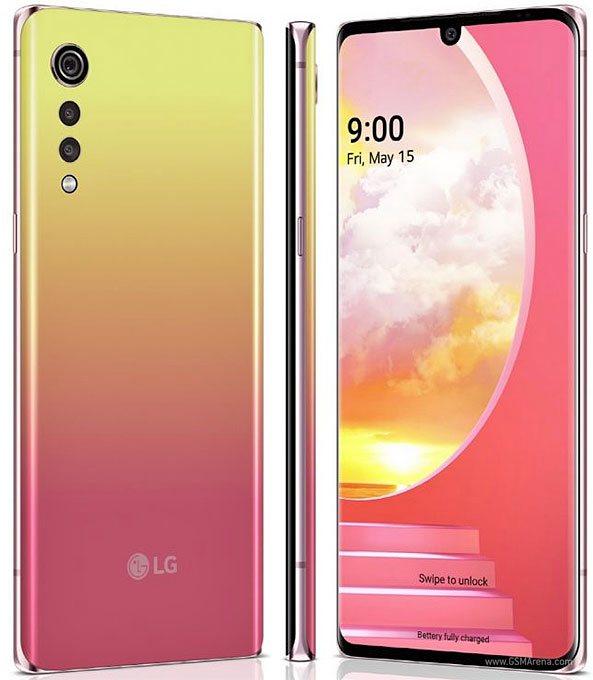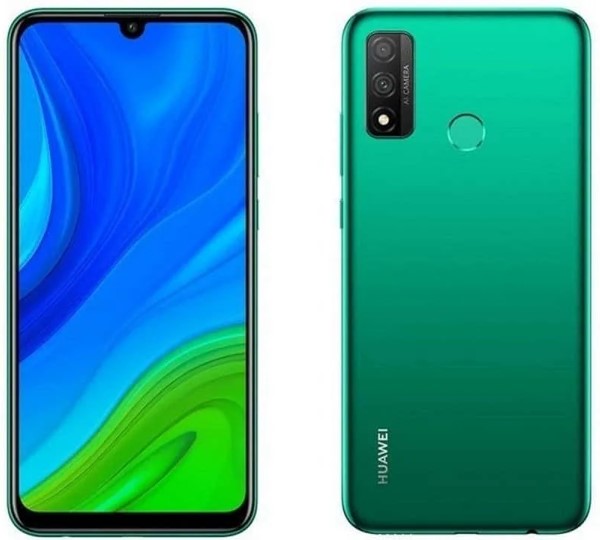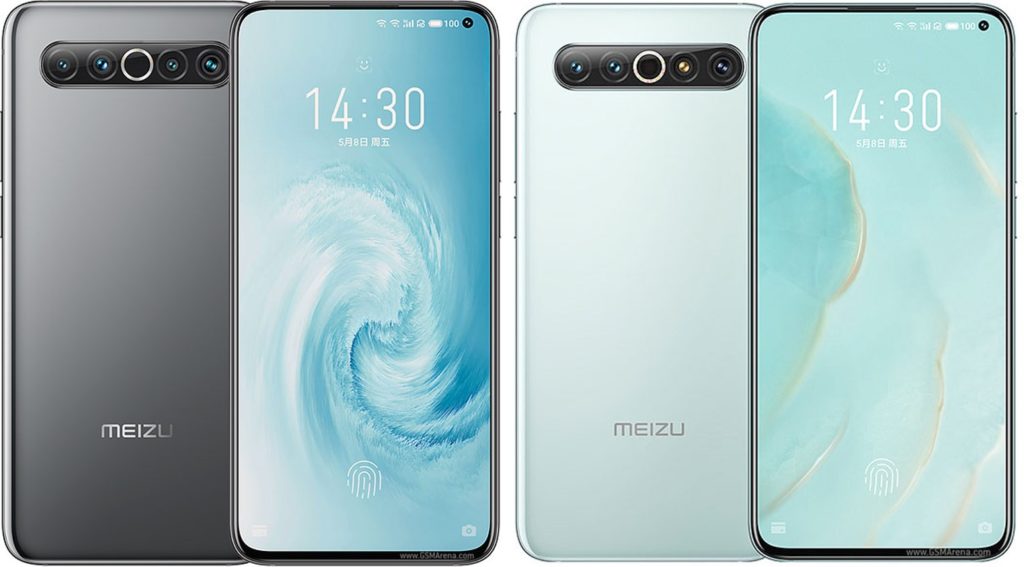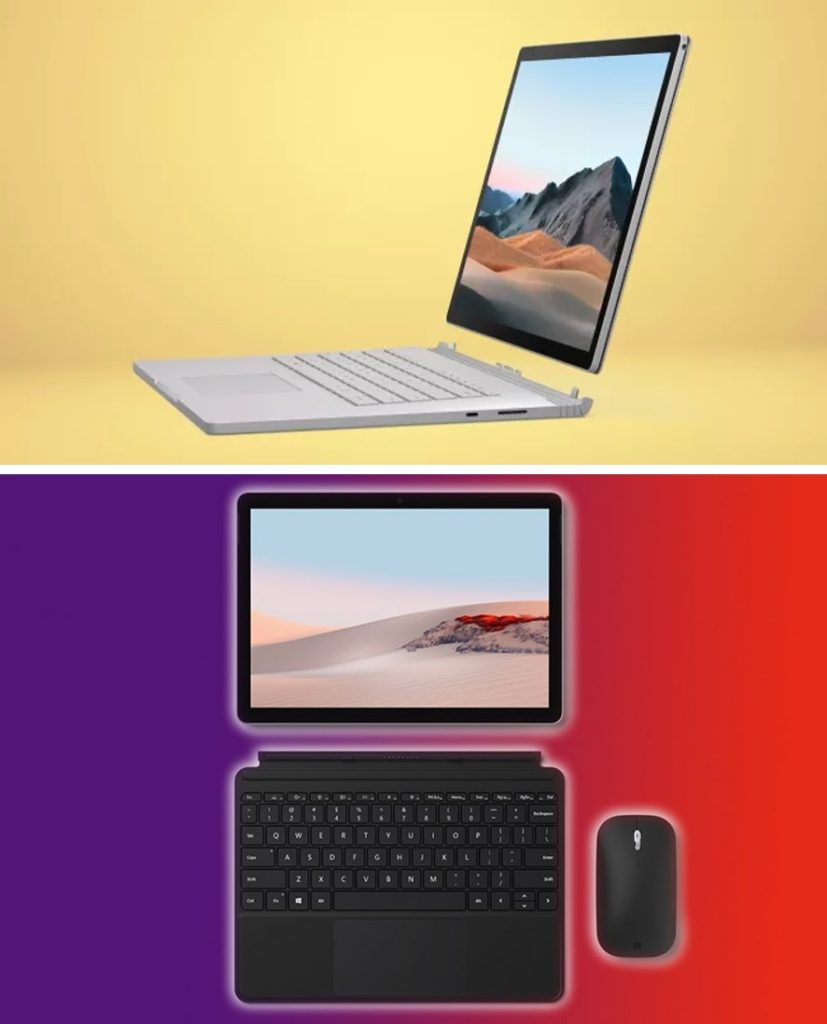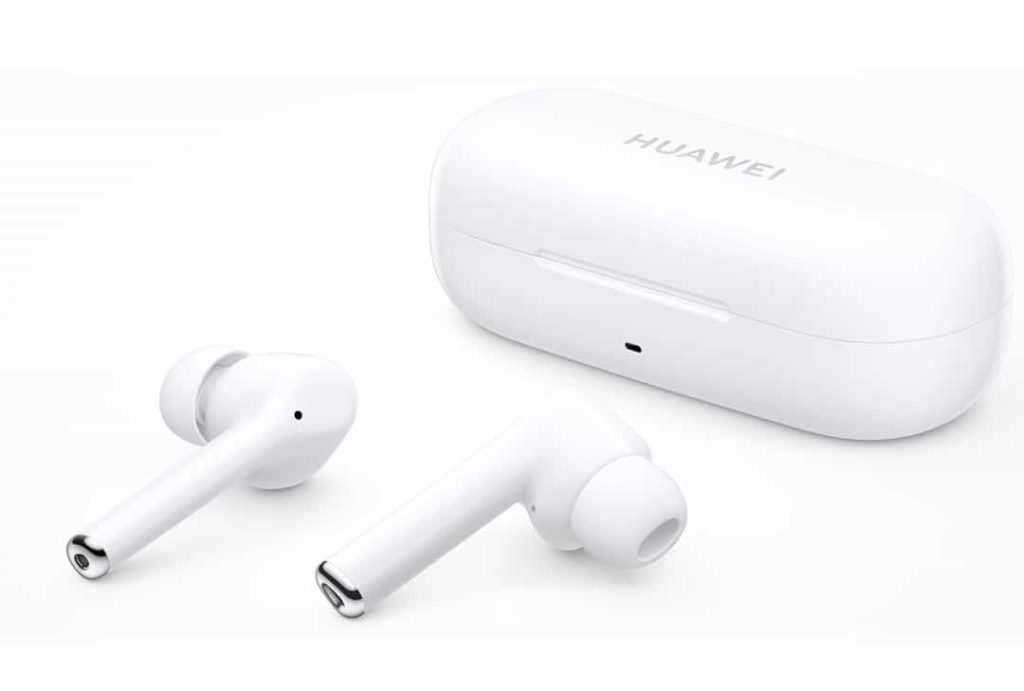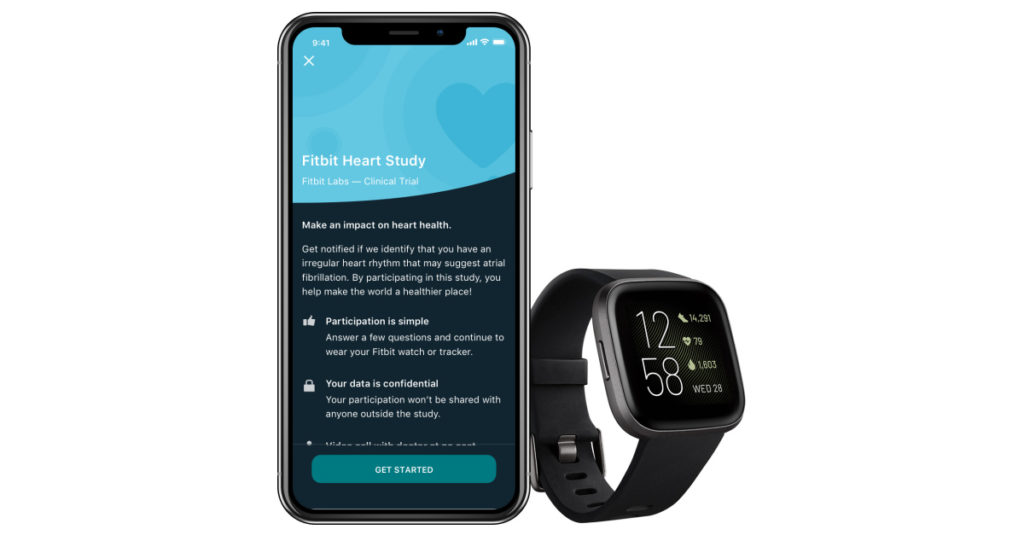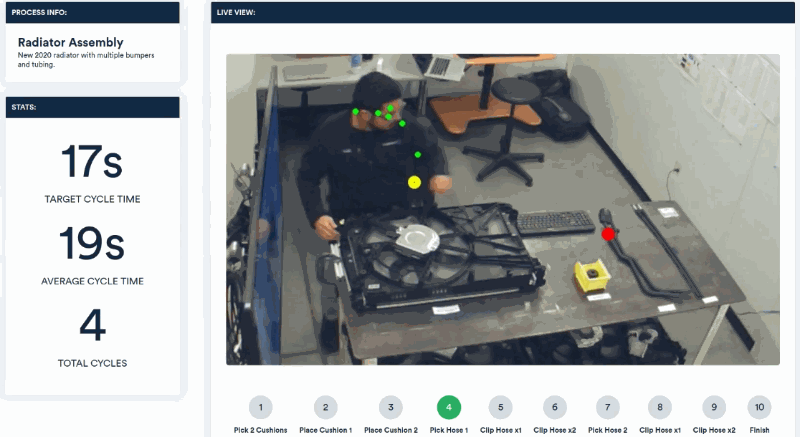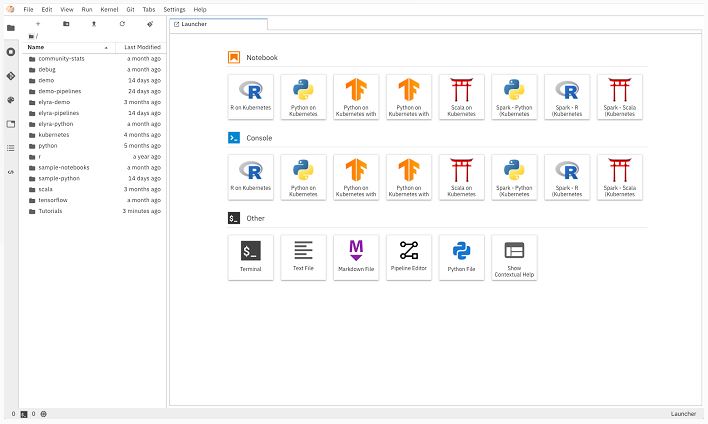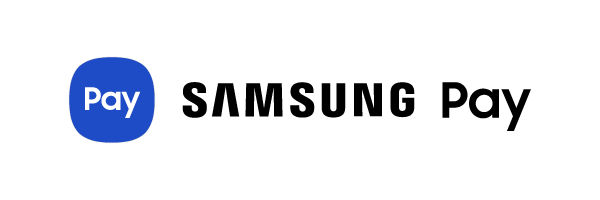
5-9 #NewNormal: MediaTek has released the enhanced version of the Dimensity 1000 series—Dimensity 1000+; Samsung, Xiaomi, OPPO and vivo factories in India have gradually resume operation; etc.
Chipsets
According to IC Insights, in total, the top-10 semiconductor companies’ sales surged by 16% in 1Q20 compared to 1Q19, more than twice the total worldwide semiconductor industry 1Q20/1Q19 increase of 7%. 9 of the top-10 companies had sales of at least USD3.0B in 1Q20, one company more than in 1Q19. It took almost USD2.7B in quarterly sales just to make it into the 1Q20 top-10 semiconductor supplier list. There are two new entrants into the top-10 ranking in 1Q20, HiSilicon and Nvidia. (IC Insights, press, Digitimes)
MediaTek has released the enhanced version of the Dimensity 1000 series—Dimensity 1000+. It is based on MediaTek’s global leading 5G, power saving, display, games, video and many other technical advantages, bringing high-end users a true flagship 5G experience. MediaTek has revealed that vivo iQOO will be launched with Dimensity 1000+, and more 5G phones with Dimensity 1000+ will be launched in the future. (CN Beta, LTN, IT Home)
Dario Gil, head of IBM Research and a champion of its quantum computing effort, has disclosed that IBM now has 18 quantum computers, an increase of 3 in 2Q20 that underscores the company’s effort to benefit from a revolutionary type of computing. (CN Beta, CNET)
Qualcomm is expected to launch Snapdragon 875, its next flagship chipset, sometime later 2020 as its first 5nm chipset made by TSMC. It will have an integrated 5G modem. Snapdragon 875 is codenamed internally SM8350. (My Drivers, Laoyaoba, 91Mobiles, WCCFtech)
Tile has announced a partnership with Intel to bring its tracking technology to laptops in order to help customers track down misplaced or stolen PCs. Intel will be providing “updated solutions” to OEMs later 2020, which means we might start seeing Tile laptops in late 2020 or early 2021. (CN Beta, The Verge, Tile)
Touch Display
TCL Technology has indicated that in the long run, global industry restructuring and consolidation will accelerate. With the recovery of the large-screen home market and the rapid growth of commercial displays, industry supply and demand will gradually restore balance. Regarding the development of new technologies for large-size panels, TCL Technology has said that there are 2 routes for large-scale new technologies, one is to prepare OLED and QLED by printing, and the other is Mini LED and Micro LED. New technology will take a long time before low-cost mass production, and LCD will remain the mainstream large-scale display application technology in the next 5-7 years. (Sohu, Laoyaoba)
LG is reportedly planning to launch a phone with a horizontally rotating display in 2H20. LG is also readying a phone with a rollable display. (Android Authority, Korea Herald)
Sanan Optoelectronics has revealed that the company is currently supplying Samsung with Mini LED chips in batches, and some other customers are verifying. According to an agreement between two companies, Samsung will pay a prepayment of USD16.83M for Sanan in exchange for a certain number of LED chips for display products (“displays”) produced by the Sanan’s Xiamen production line. Sanan Optoelectronics has announced in Apr 2019 that it will invest CNY12B to build a Mini / Micro LED epitaxy and chip base in Gedian, Hubei. Sanan has also signed a joint venture with TCL CSOT in Mar 2020 to establish a joint laboratory to develop Micro LED display technology. (Sohu, Laoyaoba)
Cambridge, UK-based FlexEnable is at the forefront of the wave of change, pushing flexible organic (O) to many industry and sector markets-OLCD has the advantages of thinness, lightness, shatter resistance and shape retention, and has the same advantages as glass The same quality and performance of LCD. FlexEnable is working with leading global consumer electronics brands to redefine displays for today’s design-conscious consumer products. (CN Beta, Sina, Leadtek Display)
TF Securities analyst Ming-Chi Kuo has indicated that Apple’s manufacturing partners, like Mini LED supplier Epistar and exclusive chip and wafer probing system provider FitTech, are gearing up for mass production of LED chips in 3Q20. That will be followed by panel assembly and terminal assembly in 4Q20, with the latter manufacturing phase potentially creeping into 1Q21. (CN Beta, TF Securities, Apple Insider)
Samsung has filed 5 design patents with the CNIPA (China National Intellectual Property Administration). All have focused on the selfie camera, which was surrounded by a graphical interface. The interface serves the purpose of revealing the status of the task the user is performing and more. (Gizmo China, Android Headlines, LetsGoDigital, CN Beta)
Taiwan’s shipments of small- to medium-size LCD panels will continue drifting downward in 2Q20 in the wake of coronavirus pandemic, with a-Si feature phone applications to be affected the most, according to Digitimes Research. Shipments of small- to medium-size panels by Taiwan’s makers fell 28.4% sequentially and 8.8% on year to 168M unit in 1Q20, as China-based handset makers were unable to fulfill their shipments due to the outbreak, cutting panel demand. (Digitimes, press)
Camera
Smartphone-use lens module maker Largan Precision has reported consolidated revenues of NTD4.683B (USD155M) for Apr 2020, decreasing 13.98% sequentially and 6.03% on year. Of lens modules shipped in Apr 2020, 20MP and above models accounted for 20-30%, 10<20MP for 40-50%, 8<10MP for 20-30%, and <8MP for 0-10%. According to Digitimes, Samsung, OPPO and Xiaomi have reduced the order volumes for smartphone lens modules, yet Huawei has increased the orders. (Digitimes, press, GSM Arena, GizChina)
Samsung Galaxy S21, which is to be launched in 1Q21, is rumored to sport a 150MP main sensor with a 64MP telephoto, 16MP wide-angle, a 12MP macro sensor and one ToF camera. Two versions are being tested. One that has Optical Image Stabilization (OIS) on the main and telephoto sensors in addition to the selfie camera and the other which has OIS for the main, telephoto and wide-angle cameras. (GizChina, Sam Mobile, Clien, Sohu)
Memory
Phison Electronics has announced that its full line of control chips support Yangtze Memory Technologies (YMTC)’s 3D NAND, which will boost the vendor’s SSD products with China-made particles. From the earliest 32-layer 3D NAND import verification PhisoneMMC control chip PS8226 to the recent 64-layer 3D NAND, Phison’s full range of NAND control chips are supported and have entered the mass production stage. (My Drivers, CN Beta, IT Home, Tech Post)
Biometrics
Facing numerous lawsuits, the New York startup Clearview AI has indicated that it “is cancelling the accounts of every customer who was not either associated with law enforcement or some other federal, state, or local government department, office, or agency”. (Engadget, BuzzFeed News, Sohu, Sina)
Battery
LG Chem overtook Panasonic of Japan and CATL of China as the No. 1 player in the global electric vehicle battery market. According to SNE Research, a market research company specializing in energy, LG Chem batteries accounted for 27.1% of the battery usage of electric vehicles registered in countries around the world in 1Q20. It more than doubled from 10.7% in 1Q19, becoming the first market leader since the tally was compiled. (CN Beta, 199IT, Korea IT Times, Pulse News)
Connectivity
Samsung is bringing support for Google’s Rich Communication Services (RCS) to Galaxy smartphones. The two companies have been working since 2018 to bring the features to Samsung devices. The Samsung Messages app with RCS allows users to do more, including chat over both Wi-Fi and mobile data, send and receive high-resolution photos and videos, receive read receipts, and create feature-rich group chats. (Phone Arena, Sam Mobile, Samsung, Sohu)
A number of Taiwan-based suppliers for Wi-Fi 6 chips are bullish about their shipment prospects for 2Q20 and beyond, as the emerging stay-at-home economy is flaring up demand for end-market devices supporting 802.11ax, according to Digitimes. IC vendors including MediaTek, Realtek Semiconductor and RichWave all expect their shipments of Wi-Fi 6 chips to more than double sequentially in 2Q20. (Digitimes, press, China Times)
Phone
According to IDC, in 1Q20, China’s smartphone market shipped approximately 66.6M units, a year-on-year decrease of 20.3%. IDC believes that due to the impact of the ‘new coronavirus’ epidemic, although China’s smartphone market dropped significantly in 1Q20, the overall performance, in the end, was better than expected. (GizChina, IDC, press)
Apple continues to rank highly brand intimacy, according to MBLM’s Brand Intimacy Study 2020. According to MBLM, they measure brand intimacy by examining users’ emotional connections to a brand, including the characteristics of their bond across categories such as nostalgia, indulgence, and identity. They also measure the intensity of a users’ connection with the brand. (Apple Insider, MBLM, report)
Muralikrishnan B, Chief Operating Officer, Xiaomi India has confirmed that Foxconn, the company’s contract manufacturer, has received approval to resume manufacturing at its Andhra Pradesh factory. The company says that it is expecting its factories to operate at regular capacity by Jun 2020 in India. (Gizmo China, Laoyaoba, Hindustan Times, India Times)
Samsung India has issued a statement where it confirmed smartphone production in its Noida factory has already been restarted in limited capacity. Xiaomi also confirmed its manufacturing partner Foxconn has been granted a green light to resume its operations at its Andhra Pradesh facility. OPPO is also eyeing to resume operations in its Greater Noida factory while vivo has confirmed it resumed operations at 30% capacity in its factory. (GSM Arena, Gizmo China, India Times)
Samsung has partnered with Benow to bring retailers online and connect them with local customers. Samsung claims that more than 20,000 retailers have already signed up to the platform and says that it is a win-win for retailers and customers. (Gizmo China, Samsung)
vivo Y30 is official in Malaysia – 6.47” 1560×720 HD+ IPS Ultra O, MediaTek Helio P35, rear quad 13MP-8MP ultrawide-2MP macro-2MP depth + front 8MP, 4+128GB, Android 10.0, rear fingerprint scanner, 5000mAh 10W, MYR899 (USD208). (GSM Arena, Gizmo China, Playful Droid)
vivo G1 5G Enterprise Edition (a customized vivo S6) is official in China – 6.44” 1080×2400 FHD+ AMOLED u-notch, Samsung Exynos 980, rear quad 48MP-8MP ultrawide-2MP macro-2MP depth + front 32MP, 8+128GB, Android 10.0, under display fingerprint, 4500mAh, CNY3,498 (USD495). (GSM Arena, GizChina, IT Home, Gizmo China)
LG Velvet is official in South Korea – 6.8” 1080×2460 FHD+ curved P-OLED u-notch, Qualcomm Snapdragon 765G, rear tri 48MP-8MP ultrawide-5MP macro + front 16MP, 8+128GB, Android 10.0, IP68 rated, 4300mAh 30W, 10W wireless charging, KRW899,800 (USD735). (GSM Arena, Android Central, LG)
Huawei P Smart 2020 is announced for Europe – 6.21” 2340×1080 FHD+ IPS u-notch, HiSilicon Kirin 710F, rear dual 13MP-2MP depth + front 8MP, 4+128GB, Android 9.0 (with GMS), rear fingerprint scanner, 3400mAh, EUR199. (GizChina, Huawei Update)
Meizu 17 series is announced in China, powered by Qualcomm Snapdragon 865, equipped with 6.6” 1080×2340 FHD+ 90Hz Super AMOLED HiD, under display fingerprint: 17 – Rear quad 64MP OIS-12MP wide-8MP ultrawide (118º)-5MP macro + front 20MP, 8+128 / 8+256GB, Android 10.0, 4500mAh 30W, CNY3,699 (USD523) / CNY3,999 (USD565). 17 Pro – Rear quad 64MP OIS-8MP telephoto-32MP ultrawide (129º)-0.3MP 3D ToF + front 20MP, 8+128 / 12+256GB, Android 10.0, 4500mAh 30W, 27W wireless charging, CNY4,299 (USD607) / CNY4,699 (USD664). (GSM Arena, GizChina, Gizmo China)
PC Tablet
Microsoft is launching Surface Book 3 and Surface Go 2: Surface Book 3 – 13.5” 3000×2000 / 15” 3240×2160, Intel Core i5 / i7, rear 8MP + front 5MP, 8GB~32GB RAM, 256GB~1TB SSD, Windows 10, 15.5 / 17.5 hours with keyboard attached, USD1,599~USD2,299. Surface Go 2 – 10.5” 1920×1280 PixelSense, 8th-Gen Intel Core m3, rear 8MP + front 5MP, 4 / 8GB RAM, 64GB EMMC / 128GB SSD, Windows 10, close to that 10 hours of rated battery life, from USD399. (Neowin, GSM Arena, Microsoft, The Verge, The Verge, Pocket-Lint, Ars Technica)
Wearables
Huawei has launched new truly wireless earbuds with active noise cancellation, called FreeBuds 3i. It features 10mm dynamic drivers for “mighty” sound and a 3-mic system to enhance call quality. They have built-in capacitive sensors on both earbuds, allowing users to control music playback and the active noise cancellation feature. (Android Headlines, Huawei, Android Central)
Fitbit has completed clinical trials of its own ECG feature and is looking to get FDA approval – as it launches a large scale study into atrial fibrillation (Afib) and irregular heart rate detection. The mass Fitbit Heart Study is part of what the company calls its “broader commitment to heart health”. Fitbit has confirmed that it “has made significant progress in the development of a new electrocardiogram (ECG) feature for spot detection of Afib”. (Engadget, CNET, Wearable, Business Wire)
Artificial Intelligence
Invisible AI is a startup that aims to monitor people doing assembly tasks using computer vision, helping maintain safety and efficiency. The company makes self-contained camera-computer units that run highly optimized computer vision algorithms to track the movements of the people they see. The company has raised a USD3.6M in seed funding. (TechCrunch, TechNews)
Google has taken an initiative called AI Explorables to make the core concepts of machine learning more accessible via a series of interactive explanations. Currently, Google has posted explanations of two fundamental concepts—Hidden Bias and Measuring Fairness. (CN Beta, Google, Neowin)
Jupyter Notebooks are now the open standard for data science and artificial intelligence (AI) model development. In keeping with IBM’s commitment to open source and the Jupyter community, in particular, IBM is proud to announce Elyra, a set of open source AI-centric extensions to Jupyter Notebooks, and, more specifically, the new JupyterLab user interface. (CN Beta, IBM)
Google has added a new feature to Google Lens, its multipurpose object recognition tool. User can now copy and paste handwritten notes from phone to the computer with Lens. By simply pointing camera at any handwritten text, highlight it on-screen, and select copy. User can then go to any document in Google Docs, hit Edit, and then Paste to paste the text. In addition to the new copy-and-paste feature, Google is also rolling out a pronunciation tool. (GSM Arena, The Verge, CN Beta)
Payment
To elevate the Samsung Pay experience, Samsung is partnering with SoFi to launch an “innovative” debit card. The new debit card will run on a new mobile-first money management platform. SoFi is a self-proclaimed non-bank, the money actually ends up with the Wilmington Savings Fund Society, another third-party brokerage. (Android Central, Samsung, CN Beta)
